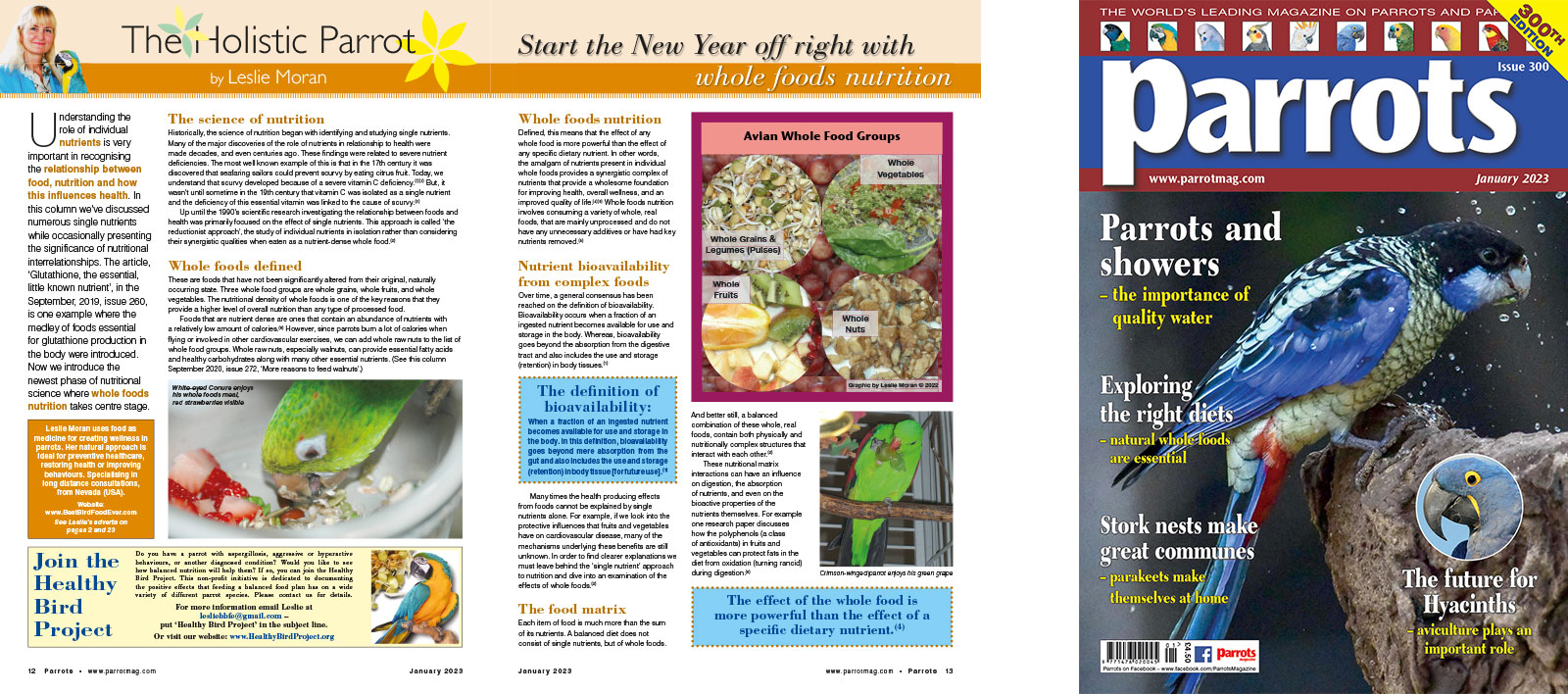
The Holistic Parrot by Leslie Moran
Understanding the role of individual nutrients is very important in recognising the relationship between food, nutrition and how this influences health. In this column we’ve discussed numerous single nutrients while occasionally presenting the significance of nutritional interrelationships. The article, ‘Glutathione, the essential, little known nutrient’, in the September, 2019, issue 260, is one example where the medley of foods essential for glutathione production in the body were introduced. Now we introduce the newest phase of nutritional science where whole foods nutrition takes centre stage.
Historically, the science of nutrition began with identifying and studying single nutrients. Many of the major discoveries of the role of nutrients in relationship to health were made decades, and even centuries ago. These findings were related to severe nutrient deficiencies. The most well known example of this is that in the 17th century it was discovered that seafaring sailors could prevent scurvy by eating citrus fruit. Today, we understand that scurvy developed because of a severe vitamin C deficiency. But, it wasn’t until sometime in the 19th century that vitamin C was isolated as a single nutrient and the deficiency of this essential vitamin was linked to the cause of scurvy.
Up until the 1990’s scientific research investigating the relationship between foods and health was primarily focused on the effect of single nutrients. This approach is called ‘the reductionist approach’, the study of individual nutrients in isolation rather than considering their synergistic qualities when eaten as a nutrient-dense whole food.
